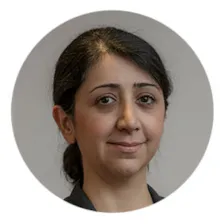“We expect the oil and gas industry to quickly adopt remote technology for technical assurance activities, such as quality assurance, verification, certification and marine warranty. It is easy and intuitive to use, and the availability of high-definition images and video stored on military-grade servers allows multiple parties from DNV GL and our customers to share insight and support critical decision making,” Molazemi added.
The company is seeing rising interest among its operator, supplier, and EPC customer base worldwide in using such digital technologies. These are already being used in projects across Europe, Asia and the Americas.
Technology delivers instant access to deep technical expertise
Instead of booking a survey weeks in advance, remote technology enables easy, instant connection with the most relevant expert for the job. The inspector or surveyor may be in Aberdeen and the survey in Abu Dhabi, for example.
Good connectivity is obviously fundamental for this. “Remote survey technology can be applied to practically every environment in which we conduct physical surveys and inspections,” said Molazemi. “If there are weaknesses in connection, we can put in place robust technologies to overcome these in order to complete the technical assurance work.”
Efficient and accurate evidence gathering
DNV GL has conducted successful pilots of the technology in partnership with operators, EPCs including Saipem, and asset and equipment manufacturers across Europe, Asia, and North and South America.
The manufacturers include Cameron, a Schlumberger Company, whose valves plant at Voghera in Italy is a world‐class centre of excellence for design and manufacturing of engineered-to-order type of valves. Some of its customers, usually major oil and gas companies and EPCs, are starting witnessing inspection activities in the plant’s workshop live from across the globe by live stream.
There are clear gains from a manufacturer’s perspective, said Mauro Ranzini, V&M Grove manufacturing manager, Cameron: “We have all the information captured, recorded, and streamed live. It is completely different to someone witnessing it physically without any records.”




